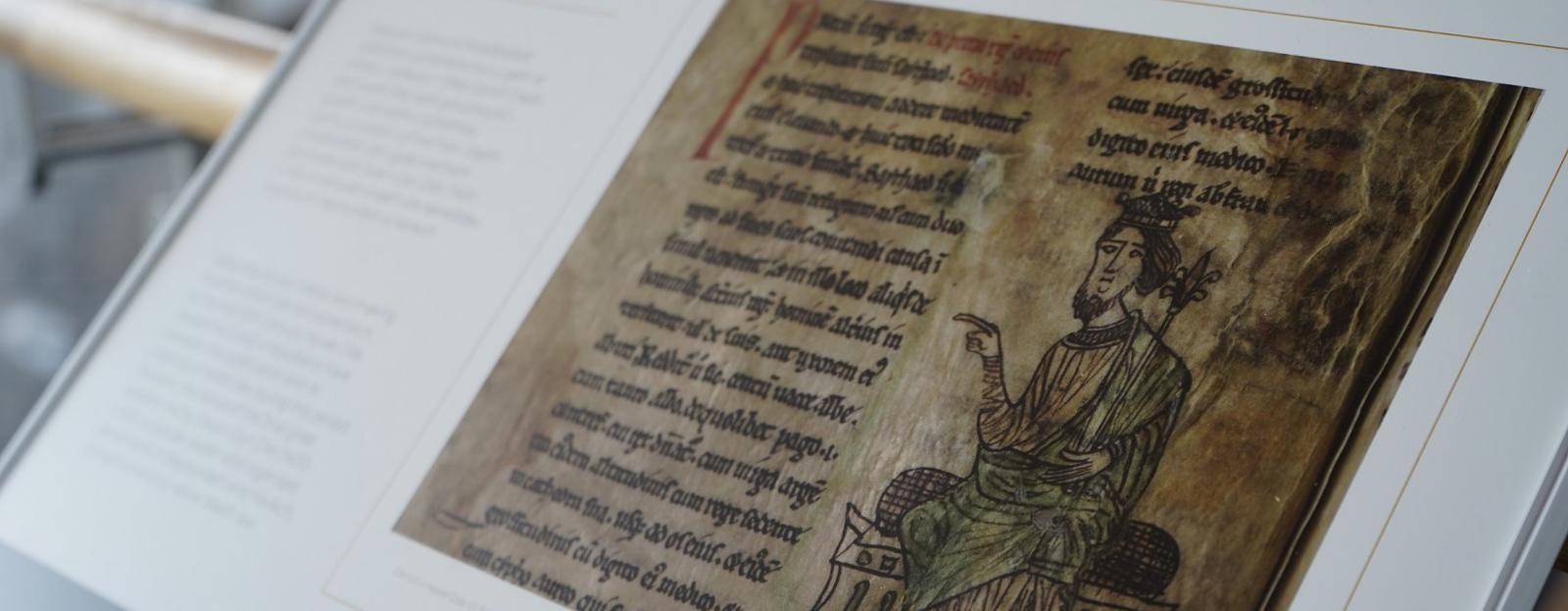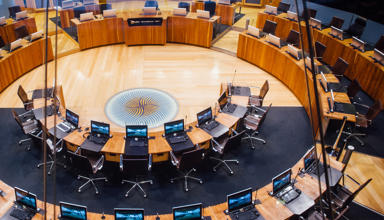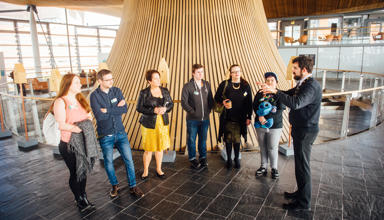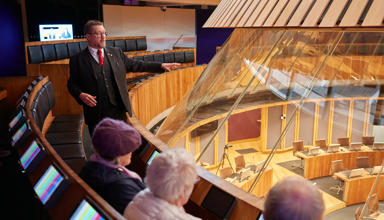Explore how Wales’s legal and political identity has evolved, from early lawmaking under Hywel Dda to the establishment of the Welsh Parliament.
Discover the Story of Welsh Devolution
Early Welsh Law and Identity (950–1415)
Wales has its own tradition of law making that dates back over a thousand years.
In the 10th century, Hywel Dda (Hywel the Good) is believed to have codified and re-ordered Welsh law.
This era ended after the final great rebellion led by Owain Glyndŵr (1400–c.1415), who organised early parliaments in Machynlleth and Harlech.
Union and Integration (1535–1830)
During the reign of Henry VIII, the Laws in Wales Acts 1535 and 1542 annexed Wales to the Kingdom of England. These Acts extended English law to Wales and specified English as the language of the law. They also established separate judicial structures for Wales in the Court of Great Sessions. Wales gained 26 (later 27) Members of Parliament in the English Parliament.
When the United Kingdom was formed in 1707, the English and Scottish Parliaments were dissolved and replaced by the Parliament of Great Britain. In 1801, this expanded to include Ireland, becoming the Parliament of the United Kingdom.
In 1746, the Wales and Berwick Act changed the legal definition of England to include Wales (and Berwick). In 1830, the Court of Great Sessions was abolished, removing the last recognisable distinctive feature of law in Wales.
Home Rule Movements (1880–1950s)
From the late 19th century, calls for devolved parliaments across the UK began to grow.
In 1881, the Sunday Closing Act became the first Welsh-specific law passed by the UK Parliament. Cymru Fydd (Young Wales) was founded in 1886 to promote Welsh home rule.
In the early 20th century, administrative devolution began with the creation of the Welsh Board for Education in 1907 and the disestablishment of the Anglican Church in Wales in 1920.
In the 1950s, the Parliament for Wales campaign, led by Lady Megan Lloyd George MP, presented a petition with 250,000 signatures calling for a Welsh parliament.
Petitions to create a Secretary of State for Wales were turned down by the Labour Government of 1945–50, which instead created the Council for Wales and Monmouthshire in 1948, an unelected advisory body.
In 1951, the Conservative Government created a junior Home Office Minister of Welsh Affairs. The post was upgraded to Minister of State in 1954.
Administrative Foundations (1960s–1970s)
Following the 1964 UK general election, the Labour Government created the role of Secretary of State for Wales. The Welsh Office was established in 1965 to implement UK Government policy in Wales, initially covering housing, local government, and roads. Over time, its responsibilities expanded to include education, health and the environment.
1965 also saw the Welsh-speaking village of Capel Celyn in the Afon Tryweryn Valley submerged under the newly formed Tryweryn reservoir. Liverpool City Council obtained authority via an Act of Parliament to create the reservoir, bypassing Welsh planning authorities and avoiding a public inquiry. The destruction of one of the last Welsh-only speaking communities was deeply controversial.
The Welsh Language Act 1967 repealed part of the Wales and Berwick Act and expanded the use of Welsh in public life.
In 1973, the Kilbrandon Commission recommended elected bodies for Wales and Scotland. However, a referendum held in Wales on St David’s Day 1979 rejected devolution by a margin of nearly 4 to 1.
Referendums and Resistance (1979–1997)
Devolution became a dormant issue in the 1980s. However, the policies of the UK Conservative Government during a period of economic difficulty, combined with low levels of Conservative support in Wales, led to renewed calls for a Welsh democratic institution.
During this time, the powers of the Welsh Office continued to grow, and many public functions were delegated to arms-length bodies known as quangos. These developments prompted increasing demands for greater accountability.
The Welsh Language Act 1993 gave Welsh equal legal status with English and repealed the 16th-century Laws in Wales Acts.
By 1997, public opinion had shifted. A second referendum passed by just 6,721 votes, leading to the creation of the National Assembly for Wales.
In 1998, the UK Parliament passed the Government of Wales Act, establishing the legal framework for the Assembly. The Act embedded values such as equality, sustainable development, partnership working and parity between Welsh and English. It granted powers to make secondary legislation in areas including agriculture, fisheries, education, housing and highways.
Establishing the Assembly (1999–2006)
The newly established Assembly was based on a more inclusive and consensual style of politics and prioritised public access to its work. However, its structure as a single corporate body responsible for both executive and scrutiny functions proved problematic.
In response to increasing calls for change, the Assembly resolved in 2002 to separate the functions of executive and legislature. The term ‘Welsh Assembly Government’ began to be used to describe the Cabinet, while ‘National Assembly’ referred to the legislature’s scrutiny and representative role.
The Richard Commission, established in 2002, recommended the legal separation of the executive and legislature, the devolution of primary law-making powers and an increase in the number of Members. These recommendations were largely accepted and enacted through the Government of Wales Act 2006.
The Senedd building was officially opened by HM The Queen on St David’s Day 2006.
Expanding Powers (2007–2020)
The years following the 2006 reforms saw a series of significant developments that expanded the powers and responsibilities of the Assembly:
- 2007: Assembly Members gained powers to make primary legislation.
- 2010: Wales became the first UK nation to introduce a carrier bag charge, reducing usage by around 75%.
- 2011: A third referendum granted full law-making powers in devolved areas.
- 2012–2014: The Silk Commission recommended financial and legislative powers.
- 2014: The Wales Act introduced taxation and borrowing powers.
- 2018–2019: New devolved tax powers were introduced, including partial control over income tax.
- 2019: The Welsh Youth Parliament met for the first time.
- 2020: The Assembly became Senedd Cymru / Welsh Parliament, fully reflecting its constitutional status. 16 and 17-year-olds and qualified foreign nationals gained the right to vote.
Modern Reforms (2024 and Beyond)
The Senedd Cymru (Members and Elections) Act 2024 marked a major constitutional change. From the 2026 Senedd election, people in Wales will use a new voting system to elect 96 Members to represent 16 constituencies across the country, reflecting the Senedd’s growing role and responsibilities.
In this video, explore the journey of the Senedd, from its beginnings to the Welsh Parliament we know today.






